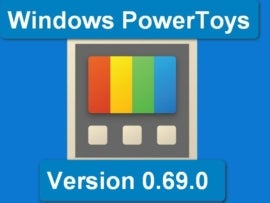
Every company converts or migrates data between systems at one time or another — even if it’s as simple as extracting data from an accounts payable system to add it into an Excel spreadsheet. When operations like these happen, some refer to the process as a data “migration” while others call it a data “conversion.”
However, data migration and data conversion are two distinct operations that serve different purposes. While data migration is the act of moving data from one location to another, data conversion is the act of changing that data so it will be compatible and functional in its new location.
SEE: Checklist: PC and Mac migrations (TechRepublic Premium)
Whenever companies decide to change to or integrate with new systems and platforms, at some point, data has to be moved. It’s ideal to move all data at once without having to make major changes, but many times, you’ll find you have to transform and manipulate the data so it can be converted into a format the new system will recognize.
If you are managing projects where data needs to move or otherwise be transformed, it’s important to know which type of data transformation you have to make so you can correctly estimate the time, cost and resources needed for the project. In this guide, learn more about the differences between data migration and data conversion and how the two processes often work together in data transformation scenarios.
Jump to:
- What is data conversion?
- Data conversion process
- What is data migration?
- Data migration process
- What are the differences between data conversion and data migration?
What is data conversion?
In the data conversion process, users change data from its current format into a data format that their new target system will accept.
Today, there are a plethora of extract, transform and load tools that can do much of the data conversion work automatically, especially if your source and target systems are commercially popular and/or the ETL tools have built-in data converters for them. In other cases, software manufacturers offer a library of application programming interfaces that can convert and move data from system to system.
These tools notwithstanding, there are still many cases, such as with homegrown or older systems, for which automated data conversion tools aren’t available.
In these cases, your staff must assess the data formats in each system and internally develop tools that can move the data from one system into a flat file, convert data in the flat file to a new data format the new system can use and then import the data into the new system. These types of data conversions can be tedious and time-consuming.
Data conversion process
The data conversion process consists of multiple steps. First, you’ll want to assess the data types you see in both the source and target systems, noting the differences in data formats. Then you’ll identify an API or an ETL tool that can perform the data conversion for you.
If an ETL tool is used, it’s important to first code the data transformation logic into the tool so it can fetch the data from the source system, transform it into a format the target system will accept and then populate the target system with the reformatted data.
If there is no ETL tool or API available, you’ll need to hand-develop your own data conversion API that can extract and reformat data from your source system into a flat file, which can then be loaded into the target system.
What is data migration?
In a straightforward data migration, you don’t have to worry about the intermediate step of reformatting data into a format the new system will accept. You simply move data from one system to another because both systems use the same data format.
On the surface, a data migration seems simpler than a data conversion, and it often is. However, you still have to map each data item from the source system point of origin to the final target system destination.
SEE: Top data quality tools (TechRepublic)
It’s also important to note that few data migrations are actually this simple. The process almost always incorporates data conversion and other data transformation steps, while also requiring data science teams to meticulously assess both data quality and security before and during the process.
Data migration process
In some respects, a data migration follows similar steps to what you would find in data conversion.
First, you must identify the data that needs to be moved from the source to the target system. Then, you’ll map each data element so it moves correctly from one system to another.
SEE: Data governance checklist for your organization (TechRepublic Premium)
The data from the source system is loaded into a flat file, as it is in data conversion. The data for the flat file is then loaded into the target system, as it is in data conversion. Especially in data migrations that involve moving massive quantities of data, the data mapping and matching stages can be resource-intensive and time-consuming.
What are the differences between data conversion and data migration?
Some years ago, I was in this debate with a computer software provider while I was CIO at a semiconductor company. Eager to sell me a new system, the software provider said that we would have to migrate the data from our existing system to the new system.
I counter-argued that this task was more than just migrating data from one system to another: Data would need to be reformatted. In some cases, it would need to be reentered manually into the new system. In short, we would have to convert most of our existing data so it could run on the new system. The work that we would have to do was several magnitudes greater in scope than just taking raw data from one system and migrating it to another.
SEE: How to identify and avoid common data migration mistakes (TechRepublic)
The primary difference between a data migration and a data conversion is that, in the strictest sense of a migration, you don’t have to transform or reformat data as you would in a data conversion. Because of this, simple data migrations typically require less time to execute than data migrations that require data conversions or other transformations.
Both data migrations and data conversions move data from a source system to a target system. They both move data through the medium of a flat file, which contains data extracted from the source system that is then loaded into the target system. In both cases, there should always be a final test of the target system to assure that all data has been properly transferred.
Read next: Top cloud and application migration tools (TechRepublic)







